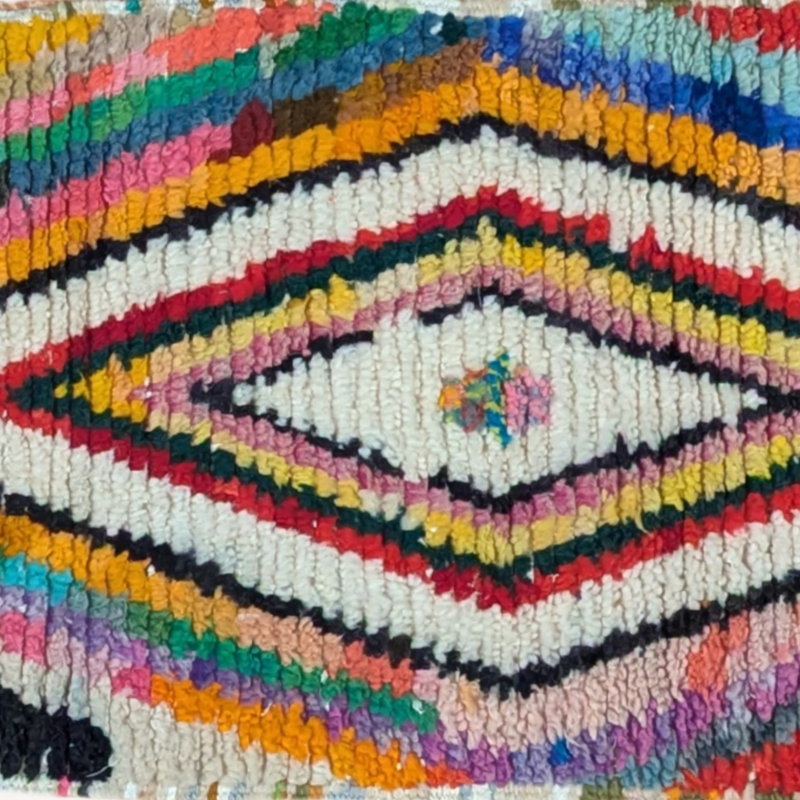A Journey into Softness and Tradition: The World of Wool in Interior Design
Today, we invite you to explore a world of softness, tradition, and craftsmanship. We’re diving into the fascinating world of wool in interior design, with a special focus on the most beloved furnishing textile: rugs. We’ll discuss not only our Moroccan rugs but also wool rugs in general.
Moroccan rugs, also known as Berber or Amazigh rugs, are loved worldwide for their unique handmade quality and centuries-old traditions. Made from high-quality sheep’s wool, these rugs are known for their versatile patterns and colors, making them a perfect fit for both modern and classic interiors. Alongside Moroccan rugs, Persian rugs are legendary. Other countries renowned for their wool production include Turkey, India, Nepal, Tibet, Afghanistan, and even New Zealand, which specializes in exporting fine merino wool for designer rugs.
In this article, we’ll cover:
-
The history of wool
-
What is wool, and how is it made?
-
Production processes and types of wool
-
Dyeing and colors
-
Daily care and maintenance
-
Deep cleaning
-
Why choose a wool rug?
-
Where to place a wool rug in your home
-
Wool and underfloor heating
-
Fun facts about wool
 A Brief History of Wool in Rugs
A Brief History of Wool in Rugs
The use of wool in rugs dates back thousands of years, with the first evidence of its use appearing around 7000 BC when humans began domesticating sheep for their fibers. During the Bronze Age (around 3000 BC), wool textiles spread across the Aegean and Middle East, as evidenced by discoveries like over 8,000 spindles in Troy.
One of the most remarkable finds is the Pazyryk carpet, discovered in the frozen Scythian tombs of the Altai Mountains and dating back to around 500 BC. This carpet, with its intricate designs and natural dyes, showcases the advanced craftsmanship of its time.
In ancient Greece and Rome, wool became a cornerstone of the textile economy. The Greeks selectively bred sheep for fine fleeces, while the Romans developed sophisticated techniques for spinning, dyeing, and weaving wool. These traditions laid the foundation for modern rug-making.
In the Middle East and North Africa, wool rug weaving took on a symbolic and artistic role. Morocco, in particular, became famous for its handcrafted rugs, such as the Beni Ourain and kilim. These rugs, made from the soft and durable wool of local sheep, feature geometric patterns rich in symbolism, often representing protection, fertility, and a connection to nature.
Today, wool rugs remain a popular choice for their durability, sustainability, and timeless beauty. They bring warmth, elegance, and a touch of history to any space.
What Is Wool, and How Is It Made?
Wool is a natural fiber obtained from the fleece of sheep and other animals like goats, camels, and rabbits. Its primary component is keratin, a protein that makes wool elastic, durable, and insulating.
The process of turning raw wool into a rug begins with shearing, usually done once a year in spring. The wool is then washed to remove impurities like dirt and lanolin, a natural wax used in cosmetics. After washing, the wool is carded to untangle and align the fibers, making them ready for spinning and dyeing.
Different types of wool are used depending on the breed of sheep and the desired texture. For example, Merino wool is known for its softness, while Lincoln wool is sturdier and ideal for rugs. Other luxurious wools include cashmere (from goats), alpaca, and angora (from rabbits).
Types of Wool Rugs
Wool rugs come in various styles, each with its own unique charm:
-
Short-Pile Rugs: These rugs have a pile height of less than 1 cm and are known for their durability. Examples include Taznakht and Boujaad rugs.
-
Long-Pile Rugs: With a pile height of over 2 cm, these rugs are soft and luxurious. Beni Ourain and Azilal rugs fall into this category.
-
Flat-Weave Rugs: Also known as kilims or hanbels, these rugs are lightweight and durable, making them perfect for high-traffic areas.
Dyeing and Colors
The art of dyeing wool dates back to ancient civilizations like Egypt and Mesopotamia. Traditional methods used natural dyes from plants, insects, and minerals. For example:
-
Red: Derived from madder roots or cochineal insects.
-
Blue: Obtained from indigo plants.
-
Yellow: Extracted from plants like reseda and turmeric.
-
Neutral Tones: Created using walnut or oak bark.
Today, both natural and synthetic dyes are used, but natural dyes remain popular for their rich, lasting colors.
Caring for Your Wool Rug
Wool rugs are naturally resistant to dirt and stains, thanks to lanolin. However, they still require proper care to maintain their beauty:
-
Vacuum Regularly: Use a vacuum with a brush roll for short-pile rugs and a flat nozzle for long-pile rugs.
-
Spot Cleaning: Blot spills immediately with a dry cloth. For stubborn stains, use a mild detergent or a mix of warm water and white vinegar.
-
Rotate Your Rug: To ensure even wear, rotate your rug every 5-6 months.
-
Moth Prevention: Use natural repellents to protect your rug from moths.
For deep cleaning, consider professional services, especially for large rugs. Small rugs can be washed at home using a gentle detergent and cold water.
Why Choose a Wool Rug?
Wool rugs offer numerous benefits:
-
Sustainability: Wool is natural, renewable, and biodegradable.
-
Durability: Wool fibers are strong and resilient, making them ideal for high-traffic areas.
-
Comfort: Wool is soft, warm, and sound-absorbing, adding coziness to any room.
-
Hypoallergenic: Wool is naturally resistant to dust mites and allergens.
While wool rugs may have a higher upfront cost, their longevity and timeless appeal make them a worthwhile investment.
Where to Place a Wool Rug in Your Home
Wool rugs are versatile and can enhance any space:
-
Living Room: Place a large rug under your sofa and coffee table to define the seating area.
-
Bedroom: Add a soft, long-pile rug beside your bed for a luxurious feel.
-
Dining Room: Use a durable rug under your dining table to create a cozy atmosphere.
-
Hallways and Entrances: Opt for flat-weave rugs that can withstand heavy foot traffic.
Wool Rugs and Underfloor Heating
Yes, wool rugs can be used with underfloor heating! Wool’s natural insulating properties allow heat to pass through easily. For best results, choose thin, short-pile rugs that won’t block heat distribution.
Fun Facts About Wool
-
The most expensive wool in the world comes from the vicuña, an Andean camelid.
-
Wool is naturally flame-resistant, with an ignition point of around 600°C.
-
In ancient Rome, wool was so valuable it was used as currency.
-
A high-quality rug can have up to a million knots per square meter.
-
Wool is used in Iceland to insulate homes, thanks to its excellent thermal properties.
We hope this journey into the world of wool has inspired you to appreciate the beauty and craftsmanship behind every wool rug. Whether you’re looking for a cozy addition to your home or a timeless piece of art, wool rugs are a perfect choice.
Visit our showroom or online shop to explore our collection of Moroccan wool rugs. We can’t wait to help you find the perfect rug for your space!





